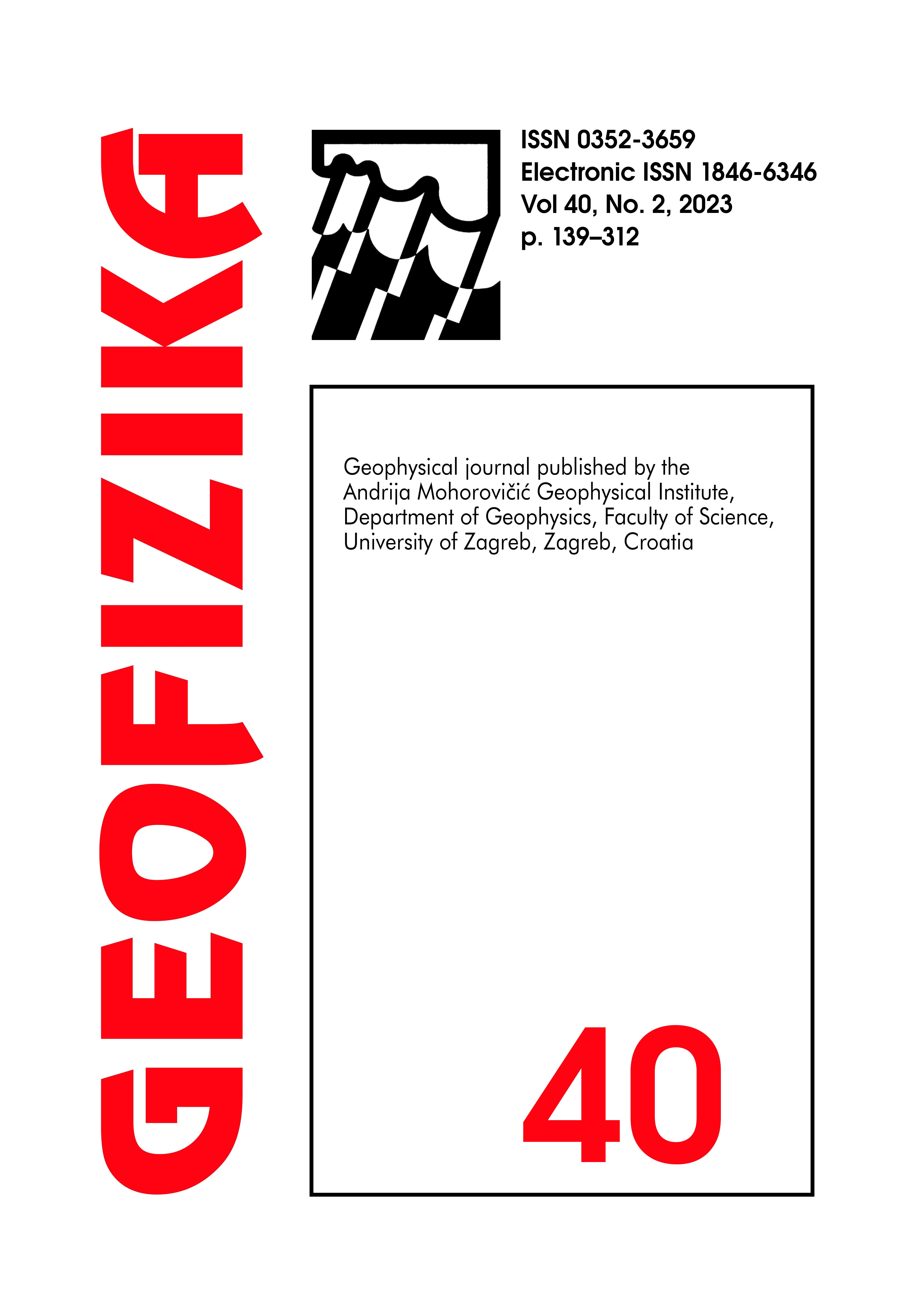Short-term forecasting of PM10 and PM2.5 concentrations with Facebook's Prophet Model at the Belgrade-Zeleno brdo
DOI:
https://doi.org/10.15233/gfz.2023.40.7Keywords:
time series analysis, time series forecasting, air quality, suspended particlesAbstract
We demonstrate the use of Facebook's Prophet (usually just called Prophet) model for short-term air quality forecasting at Belgrade-Zeleno brdo monitoring station. To address missing data, we applied minimally-altering data distribution imputation techniques. Linear interpolation proved effective for short-term gaps (1–3 hours), hourly mean method for mid-term gaps (24–26 hours), and Hermite interpolation polynomial for long-term gaps (132–148 hours). The most significant data change was a 3.4% shift in skewness. Partitioning the time series enabled a detailed quality assessment of the Prophet model, with PM2.5 predictions being more precise than PM10. Using the longest time series for forecasting yielded absolute errors of 6.5 μg/m3 for PM10 and 2.7 μg/m3 for PM2.5. Based on 173 forecasts, we anticipate Prophet model root-mean-square values under 6.26 μg/m3 and 9.99 μg/m3 for PM2.5 and PM10 in 50% of cases. The Prophet model demonstrates several advantages and yields satisfactory results. In future research, the results obtained from the Prophet model will serve as benchmark values for other models. Additionally, the Prophet model is capable of providing satisfactory air quality forecasting results and will be utilized in future research.
Downloads
Published
Issue
Section
License
Copyright (c) 2023 Geofizika Journal

This work is licensed under a Creative Commons Attribution-NonCommercial 4.0 International License.

